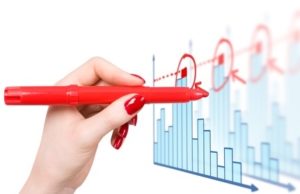Introduction
Have you ever thought about what sets your business apart from others? Is it your top sellers being some of the best in the industry? Perhaps it’s the various tools your team uses working seamlessly together to create a better workflow. If you’re lucky, maybe it’s both. However, have you thought about how these and many more aspects of sales work together? This is called sales enablement.
In short, sales enablement is the tools used to help bring people and technology together throughout the sales cycle to help sellers perform better. Sales enablement tools can be used to help turn your team’s performance around or keep it rising towards greatness. But it’s important to use it strategically since that’s how you can ensure getting the most value out of it.
What is a Sales Enablement Strategy?
Obtain a Competitive Advantage
Sales enablement strategy is the thought process and execution behind what a company does with their sales enablement platform. It’s not enough to just have one, you must put it to good use. Strategy is all about coming up with a plan to create a sustained competitive advantage over your competitors. A sales enablement strategy helps you accomplish this by putting your sellers in a much better position than sellers at a company that doesn’t use this technology.

Use the Whole Tool
A sales enablement platform has many parts. This includes technology that helps keep your sellers organized, gives them a script to read from, provides data to the team leader, and so much more. When developing a strategy on how to use these platforms, it’s important to remember to use the whole tool. What’s the point of only utilizing some of the features and not all of them? Remember, a seller and your team are only going to get better with more efficiency and organization, so give it to them.
Make Changes as Needed
Selling is not a set it and forget it process. Your strategy should always be open to change to fit new best practices. Say you set one strategy, fully utilize your sales enablement platform, and see a few sellers not getting the job done. What might have happened to them? Why are they lagging behind your top sellers? By looking into the data and practices of your top sellers, you can then change your strategy to better equip your bottom sellers with the proper tools. What’s the point of having a few really good sellers if their skills go to waste and aren’t taught across the board to bring the whole team up with them? A good sales enablement strategy will help combat this and lift all your sellers up together.
How do you Develop a Sales Enablement Strategy?
Developing a sales enablement strategy does not need to be complicated. Don’t overwhelm yourself with everything, take it one step at a time. Consider one thing then another. First, you could think about the technology that will be needed to succeed and how you’re going to implement it. This includes picking platforms to use, installing them and setting your sellers up, training for your sellers, and so on. After this, you should think about what messaging you want your sellers to use. By using insights from competitive research, what your customers say about your product, or what has worked well in the past, you can develop consistent messaging for all your sellers to use. Then you may want to create repeatable cadences for your sellers. This will ensure this messaging is not only used but used in the same way every time across your team. Finally, consider your goals. This includes figuring out what key metrics you want to look at to determine if your strategy is working and if your sellers are being successful.
How to Measure a Sales Enablement Strategy
Measuring your sales enablement strategy is a different story. This is where a team leader steps in and directs everyone towards their goals. An okay leader will look at their top sellers and tell the rest to be more like them. A great leader will look at their top sellers, see why they’re at the top, and implement ways for their bottom sellers to come up to their level. See the difference? It’s not enough to just hope bottom sellers pick up on trends themselves and change their ways on their own. A leader must look into the details and discover ways to create change for them.
Using Data and Actionable Insights
One main way to help measure a sales enablement strategy’s success is by looking into the data and analytics that are produced from the sellers. For example, a team leader could look at which sellers are performing best in which markets or look into how many touches each of them takes to land a conversation and eventually, close a deal. By seeing trends in this data, a great leader will develop actionable insights that their team can use. Actionable insights are conclusions that can be put to use. It’s no help to tell your bottom sellers to just do better. It would be helpful however to be able to show them best practices from a top seller and explain to them how making a few tweaks in their day-to-day can help raise efficiency and effectiveness. Check out this post about determining the best sales enablement KPIs.

Summary
Having an effective sales enablement strategy is game changing. Not only will your sellers be more aligned with the technology and tools put in front of them, but you will be setting yourself up to turn bottom sellers into top ones. However, you must remember everything that goes into creating a sales enablement strategy like obtaining a competitive advantage, using the whole tool, and making changes as needed. If you’re able to do all these effectively, you’ll see your sales team rocket upward and close more deals. By using a tool like Salesvue, you will already be started down the right path to accomplishing this.
About Salesvue
Salesvue is a Salesforce-native sales engagement and sales enablement platform that helps you bring synergy to the whole team. Because you and your data never leave Salesforce, sales and marketing teams have easy access to share and manage all customer and prospect data. With Salesvue, you get real-time insights into how your sales team is performing, what is being discussed in each call, and the effectiveness of your campaigns. Data analysis even shows you objection patterns, so you can manage the marketing message and the sales conversation better. Request a demo today to see how we can empower your sales organization to do more, close more, and improve more.
Category
Tags
Subscribe to Funnel Vision
Get the latest and greatest right in your inbox




